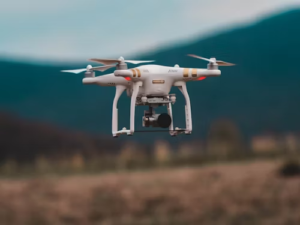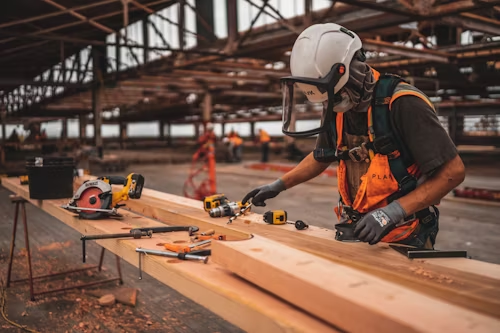Technological evolution is transforming conventional methods and driving industry transition toward an era of productivity, sustainability, and resilience. Technology is shaping the construction industry from top to bottom, from the invention of cutting-edge design software to the revamping of Costas Constructions materials.
As a result, we are now faced with the need to rethink, plan, and build tomorrow’s buildings in a far more holistic way than before.
It is no wonder that in such competitive times, the use of advanced technologies is not just a trend but a must-have for effective work and meeting the increasing needs of this dynamic world.
In this article, we will analyze the power of technology in redirecting the construction industry. Together, let’s discover the digital construction space, where innovation and wisdom merge to make the world a better place.
1. Building Information Modeling (BIM)
On the backbone of advanced construction is Building Intelligence Modeling (BIM). BIM is a revolutionary digital tool that reshapes how the process of project execution is comprehended.
It goes beyond the 2D drawings, enabling a 3D model that almost grasps all the structure facets and details. Through this, architects, engineers and construction professionals can work eminently together within a digital platform.
This makes communication, estimation, and innovation possible from planning to completion, a practice exemplified by Costas Constructions in their recent projects.
2. Drones

Unmanned aerial vehicles, or drones, have not only gone beyond recreational use but nowadays, they are a must have equipment in construction companies.
Fitted with cameras and sensors that can take high-resolution photos, drones are capable of providing unequaled perspective into the construction sites.
These devices can capture real-time information about the location, survey, and development of the site. Drones help construction managers see their projects from a bird’s-eye, which allows them to align workflows, improve safety, and mitigate risks.
3. Augmented Reality (AR) and Virtual Reality (VR)
The application of augmented reality (AR) and VR technology has exceeded its role as a gaming tool and has become a powerful force in the building industry for stakeholders.
Architects and clients both become part of virtual worlds in which designs can be viewed from different angles, with incredible accuracy, before building a single brick.
AR integrates digital information with the physical world putting tasks on-site at forefront, while VR immerses users into virtual simulations that promote cooperation, creativity, and evidence-based decision-making.
4. 3D Printing
The era of additive manufacturing has had a redefining influence on the construction sector, with 3D printing playing a critical role in developing innovation in the sector. The construction process involves not only the general architectural models and the towering edifices, but 3D printers can actualize them with precision and velocity.
Through the extrusion of layers of concrete, plastic, or metal, the construction companies look forward to accepting the challenge of cheaper costs, reduced rates of waste, and increased timelines. With the scaling of 3D printers for new building Costas Constructions emerge new limits of the moments of possibility.
5. Robotics and Automation

Robotics and automation will be the next innovation, offering a future era of construction where machines and humans work as a team. Suppressing robots are engaged in replicative tasks, including bricklaying or welding, and increasing productivity and safety on construction sites.
Construction zones can easily be moved around by autonomous cars that carry materials and the required equipment, and drones are used to observe all this from above. This relationship exposes the future of construction, which is paved with radical efficiency and innovativeness and is a live dream.
6. Internet of Things (IoT)
With the coming of the Internet of Things (IoT), the physical world is brought together with the digital sphere to create a new era of information and connectivity with the construction industry.
Smart sensors built into built-up areas and equipment collect data in real time, furnishing directors with intelligent inputs that can be used effectively to monitor performance, maintenance, and safety.
While sensors log readings of structural integrity, the decision-making process is informed by an interconnected data ecosystem that optimizes energy usage.
7. Modular Construction

Modular buildings turn conventional construction practices upside down through off-site fabrication of interlocking components that are put on site.
This modular approach can cut down the Costas Constructions times, produce minimal waste and maximize efficiency, and still deliver high-quality, personalized buildings.
Digital design and manufacturing are advancing, and thus, modular construction is coming to light as the cornerstone of sustainable development. This can serve as the blueprint for future urbanization.
8. Sustainable Materials and Technologies
Innovation and sustainability in the Costas Constructions industry are the hot topics of the century when environmental responsibility is at the forefront.
From green rooftops to solar panels, sustainable materials and applications not only reduce the carbon footprint of buildings but also make them more energy-efficient and resilient.
As sustainability continues gaining ground, the building industry is infused with innovation, taking advantage of technology to create durable buildings that do not abuse the ecosystem.
Conclusion
As we evolve in the whirlwind landscape of construction technology, it is a known fact that innovation is no longer a choice but a vital tool to use as we go along with the flow.
Such advancements in the means of construction are not only reshaping the manner in which we construct but also redefining the way we see sustainability and efficiency.
With the application of such high-end tools and methods, we not only gain more productivity and ensure safety but also start shaping a greener and more Costas Constructions robust world.
In exploring what can be done, we need to keep the power of technology determined to build up an environment that offers safety to future generations.



